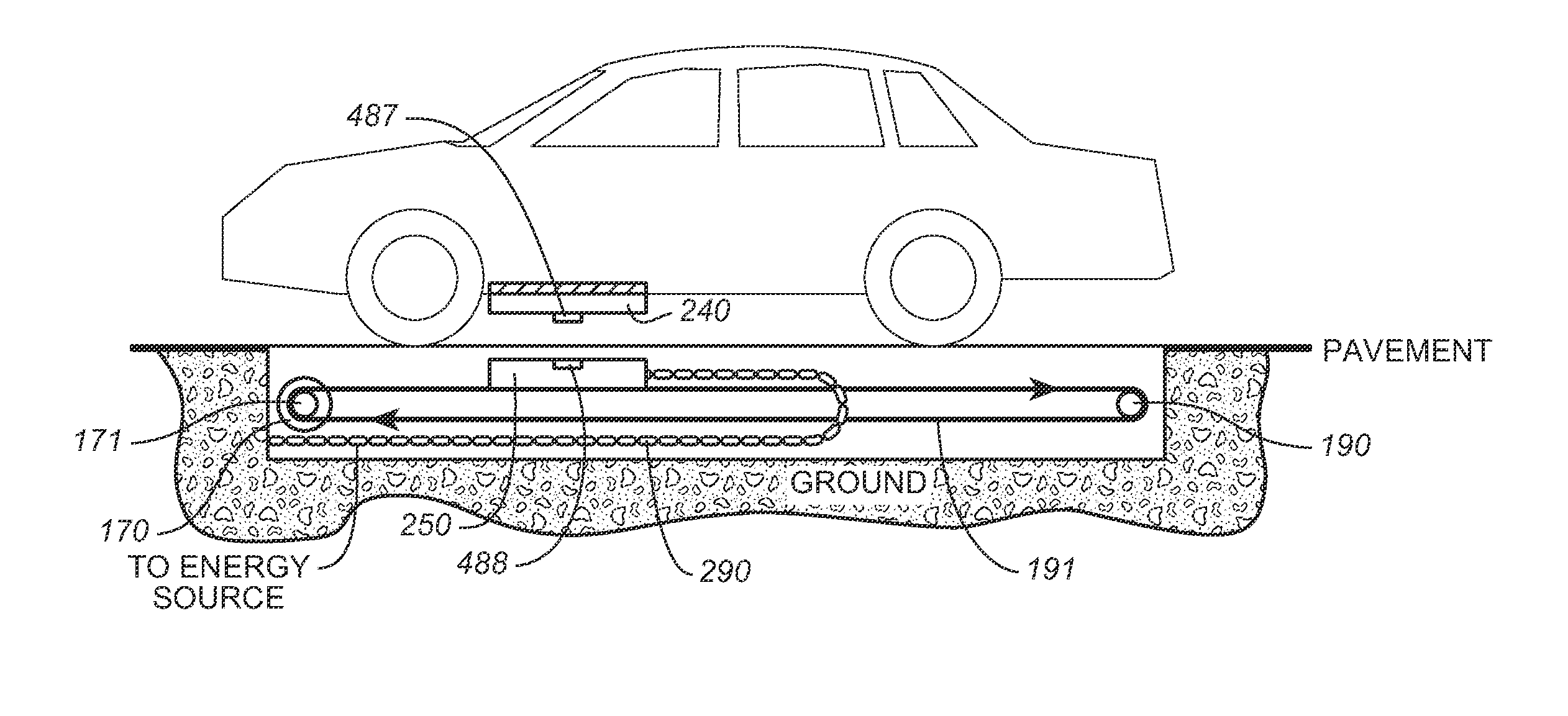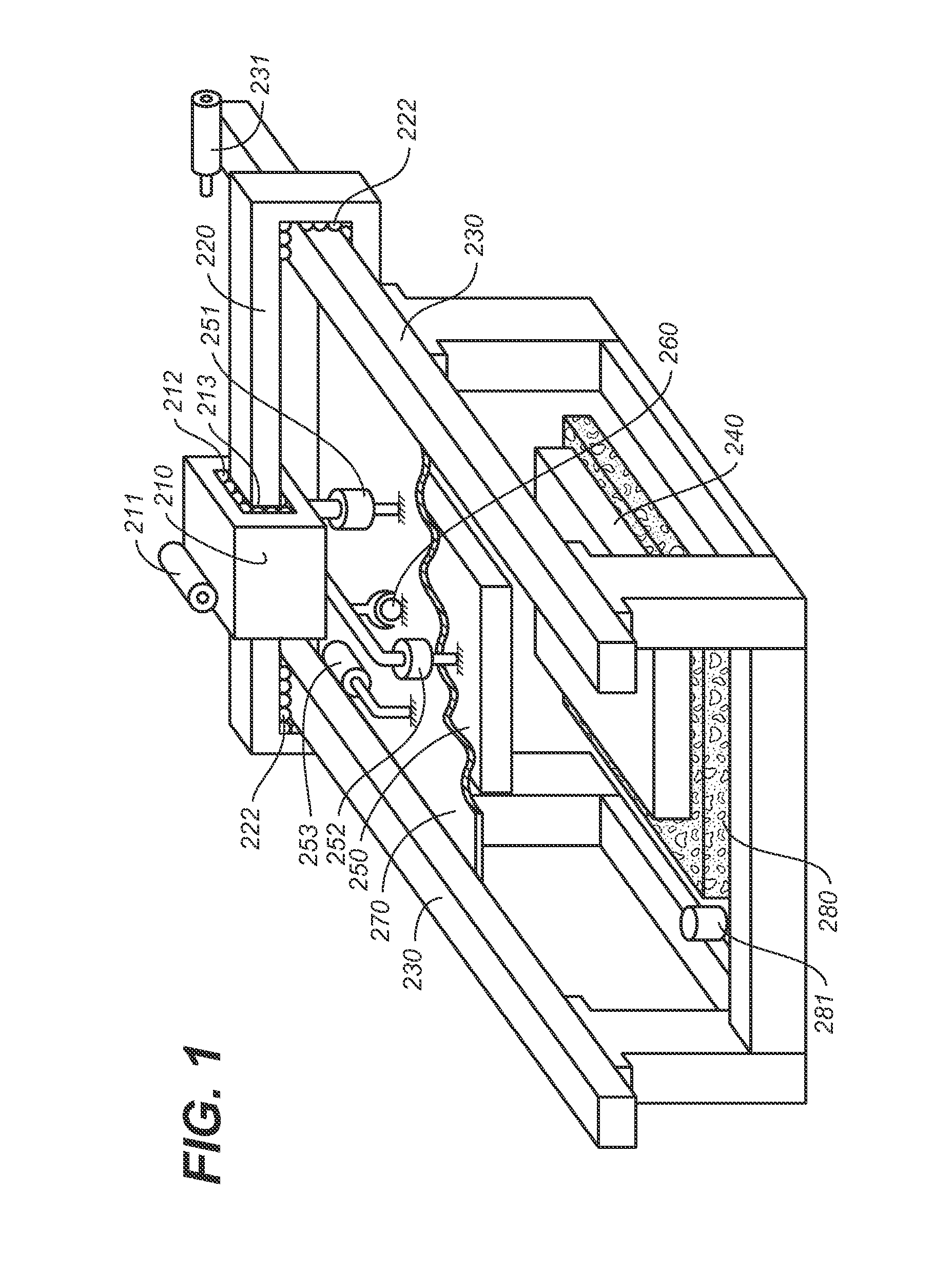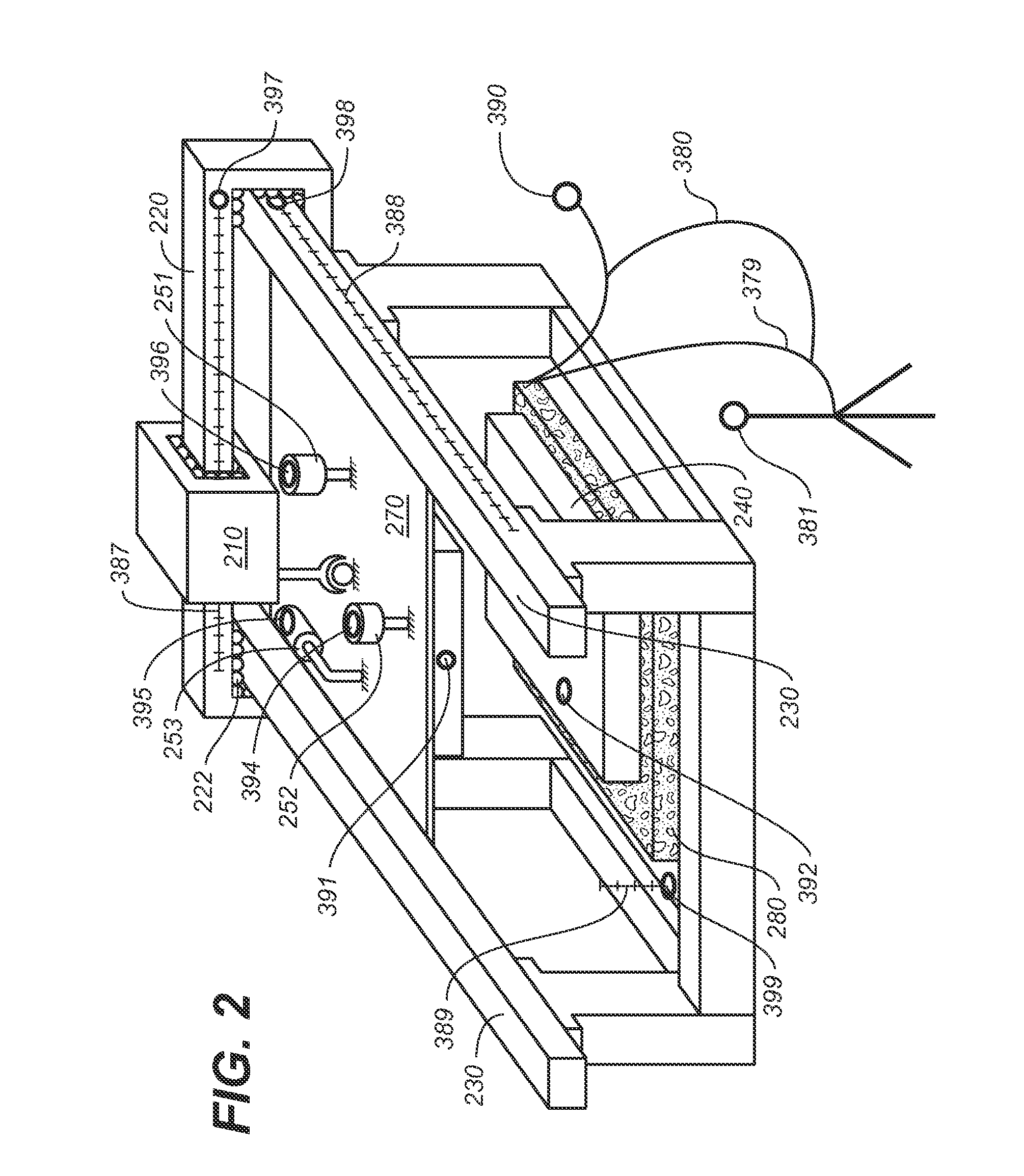Alignment, Verification, and Optimization of High Power Wireless Charging Systems
a wireless charging and wireless charging technology, applied in charging stations, electric vehicle charging technology, transportation and packaging, etc., can solve problems such as electric shock, cycle life, and high voltage cables, and achieve seamless and convenient parking procedures for the vehicle operator, and high complexity. , the effect of high level of complexity
- Summary
- Abstract
- Description
- Claims
- Application Information
AI Technical Summary
Benefits of technology
Problems solved by technology
Method used
Image
Examples
Embodiment Construction
[0027]The invention is composed of a coordinate positioning and measuring frame that is computer programmable for the purpose of automatically running test procedures for the optimization and verification of high power wireless charging devices. By high power, we mean greater than 3 kilowatts. The frame employs the basic ideas behind a CNC multi-axis machine tool and coordinate measuring machine that are commonly used in manufacturing. It employs servo drives and / or other actuators for positioning and encoders and scales for precisely measuring position but has been adapted to position and record location and orientation information of a charge coupler device's magnetic resonance coils. To this end, the frame of the apparatus, as will be described in detail infra, must be ridged enough to support the weight of the charging coil modules and have powerful enough drives to move and position the modules. Exemplary materials useful for this purpose include aluminum, steel, concrete, and ...
PUM
 Login to View More
Login to View More Abstract
Description
Claims
Application Information
 Login to View More
Login to View More - R&D
- Intellectual Property
- Life Sciences
- Materials
- Tech Scout
- Unparalleled Data Quality
- Higher Quality Content
- 60% Fewer Hallucinations
Browse by: Latest US Patents, China's latest patents, Technical Efficacy Thesaurus, Application Domain, Technology Topic, Popular Technical Reports.
© 2025 PatSnap. All rights reserved.Legal|Privacy policy|Modern Slavery Act Transparency Statement|Sitemap|About US| Contact US: help@patsnap.com



